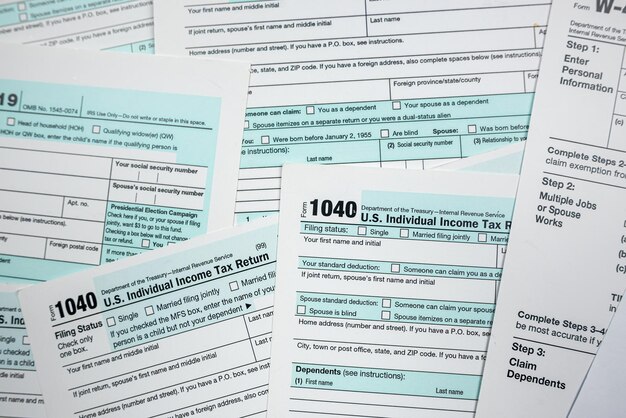How to Obtain Your 1098-T Form: A Comprehensive Guide
In the journey of higher education, understanding the financial aspects is crucial. One essential document in this landscape is the 1098-T form. If you're a student or a parent, you might be wondering, where can I get my 1098-T form? This guide will walk you through everything you need to know about the 1098-T and how to obtain it.
What is a 1098-T Form?
The 1098-T form is a tuition statement provided by colleges and universities to students each year. This document is critical for tax reporting because it provides information about tuition expenses that might qualify the student—or their parents, if they claim the student as a dependent—for educational tax credits, such as the American Opportunity Credit or the Lifetime Learning Credit.
📌 Quick Facts About the 1098-T Form
- Purpose: Reports tuition paid and scholarships received.
- Issued by: Participating educational institutions.
- Usage: Helps in claiming education-related tax credits.
Who Issues the 1098-T Form?
Educational Institutions: Colleges, universities, and other post-secondary institutions that qualify under the guidelines set by the Internal Revenue Service (IRS) are responsible for issuing 1098-T forms. Generally, any institution that maintains a regular faculty, curriculum, and an enrolled student body is required to provide these forms if the student is enrolled in courses for credit.
How Institutions Determine Eligibility
- The student must be enrolled in at least one course for which they earn academic credit.
- Forms are typically issued for students whose payments or qualified charges exceed certain thresholds.
- Scholarships, grants, and waivers are subtracted from tuition charges when calculating amounts.
Where to Get Your 1098-T Form
1. Online Portal Access
Many institutions provide access to the 1098-T form through their secure online student portals. Here’s how to navigate this:
- Log into your student account: Use your school-provided credentials to access the portal.
- Find the appropriate section: Look for links labeled "financial services," "student records," or "tax documents."
- Download the form: Once located, you can usually view and download a PDF copy of your 1098-T.
2. Mail Services
Some institutions may send physical copies of the 1098-T form to the student's permanent address on file. If you haven't received it by a month after the tax year's end, follow these steps:
- Check your address: Ensure your mailing address is correct in school records.
- Contact the financial aid office: Inquire about the mailing status of your 1098-T form.
Understanding Your 1098-T Form
Key Information on the Form
- Box 1: Payments received for qualified tuition and related expenses.
- Box 2: Historically reported amounts billed (often left blank now under IRS guidelines).
- Box 5: Scholarships and grants.
Understanding these components is crucial, as the form assists in the preparation of tax returns, proving eligibility for various educational tax credits.
🧾 Tip Sheet: Navigating the 1098-T
- 🏫 Keep it Handy: Open your school’s email alerts about tax forms.
- 💻 Verify Portal Access: Double-check your online account for secure access.
- 📨 Check Mail Regularly: Note the estimated arrival dates via mail.
When to Expect Your 1098-T Form
Typically, institutions are required to furnish the form by January 31st following the year in which the payments were made. It's crucial to keep an eye on deadlines to ensure you have the form in time for tax preparation.
What If You Fail to Receive the Form?
- Contact Enrollment Services: If the form isn't available by early February, contact your school’s enrollment or financial department.
- Check for Eligibility: In some cases, part-time students may not qualify if certain conditions aren't met.
Maximizing the Use of Your 1098-T
Claiming Tax Credits
There are several tax credits available that the 1098-T might help you claim. Understanding these can be beneficial:
1. American Opportunity Credit
- Eligibility: For undergraduates in their first four years.
- Benefit: Up to $2,500 credit per student.
2. Lifetime Learning Credit
- Eligibility: For all years of postsecondary education and courses to acquire or improve job skills.
- Benefit: Up to $2,000 per tax return.
How to Use the Form
- Verify your tuition and related payments.
- Cross-reference with personal records to ensure accuracy.
- Consult a tax advisor to maximize applicable credits.
Challenges and Solutions
Common Issues
- No Form Available: Sometimes forms aren’t generated if less than certain payment thresholds are met.
- Incorrect Information: Mistakes on the form related to personal information or financial data.
Solutions
- Proactively Manage Accounts: Keep your personal and school information up to date.
- Prompt Action: Address issues directly with enrollment services swiftly to resolve discrepancies.
🔍 Summary at a Glance
- 🎓 Verify Eligibility: Ensure you meet criteria for form issuance.
- 💡 Understand Elements: Recognize key form information like Box 1 & 5.
- 👍 Consider Tax Credits: Know the various credits and their benefits.
Final Thoughts
Securing a 1098-T form and understanding its impact can greatly facilitate the tax filing process and improve financial outcomes through potential tax savings. By ensuring your information is up to date and knowing where to access these forms, you can ease the administrative burden and focus on your educational endeavors.
Overall, maintaining good communication with your institution’s financial services and being proactive about your tax-related responsibilities ensures you can take full advantage of potential educational tax benefits.

Related Topics
- Do High School Students Get 1098
- Does 1098 t Increase Refund
- How Can I Find My 1098 t Form Online
- How Can I Get My 1098 t Form Online
- How Do I Find My 1098 t Online
- How Do I Get 1098 t
- How Do I Get a 1098 Form
- How Do I Get My 1098 Mortgage Form Online
- How Do I Get My 1098 Mortgage Interest Statement
- How Do I Get My 1098 t